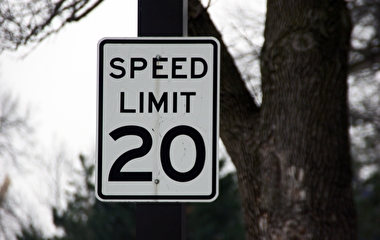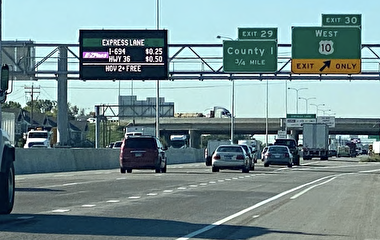
In Minnesota and across the country, the flashing yellow arrow is gradually replacing the circular green light to indicate a “permissive left turn”—the phase when drivers may turn left if there is a sufficient gap in oncoming traffic. However, some local agencies have hesitated to adopt the signal for fear of confusing drivers.
In a project sponsored by the Minnesota Local Road Research Board, U researchers examined how well drivers interpret flashing yellow arrows. Professor Gary Davis of the Department of Civil, Environmental, and Geo- Engineering (CEGE) was the principal investigator, and CEGE assistant professor Raphael Stern was co-investigator.
Flashing yellow arrows were formally authorized in 2009 in the FHWA’s Manual on Uniform Traffic Control Devices, and language in Minnesota’s MUTCD was updated in 2011. The signals are thought to be more intuitive than circular green lights, and studies indicate they improve traffic flow and safety. Another key advantage: Arrow signals can be programmed to switch between permissive and protective (green-arrow only) left turns at different times of the day.
Since the method’s adoption, however, there have been news stories and anecdotal reports about drivers failing to understand the meaning of the signal. There has also been a push to adopt “Left Turn Yield” signs to clear up confusion.
“Local agencies wanted to assess driver understanding in different signal arrangements and find out whether having an accompanying yield sign helped comprehension,” Davis says.
After performing a literature review, U researchers conducted an online survey of Twin Cities drivers. The survey, in May 2021, examined drivers’ understanding of different signal face arrangements and whether the addition of a “Left Turn Yield on Flashing Yellow Arrow” sign made a significant impact.
Of the 480 respondents, almost all understood that the flashing yellow arrow indicates a permissive (not protected) turn. The yield sign made little difference—when used, comprehension rose from 94 to 96 percent.
“This study did not directly address the safety effects, if any, of the yield signs,” Davis adds, “and a comparison of crash experience at locations with and without the yield signs would be a useful next step."
The research team also conducted a field study at nine Twin Cities intersections to gather further data about gap acceptance. Researchers found that, on average, drivers waited for longer gaps in traffic at signals with solid green circles than at those with flashing yellow arrows. In addition, gaps were significantly longer when the “Left Turn Yield” sign was present. “The findings support other studies that show flashing yellow arrows can improve traffic flow,” Davis says.
“These results give local transportation agencies confidence that flashing yellow arrows are well understood by drivers without having to install and maintain an accompanying Left Turn Yield sign,” says Victor Lund, traffic engineer with St. Louis County public works and the project’s technical liaison.
—Sophie Koch, contributing writer


